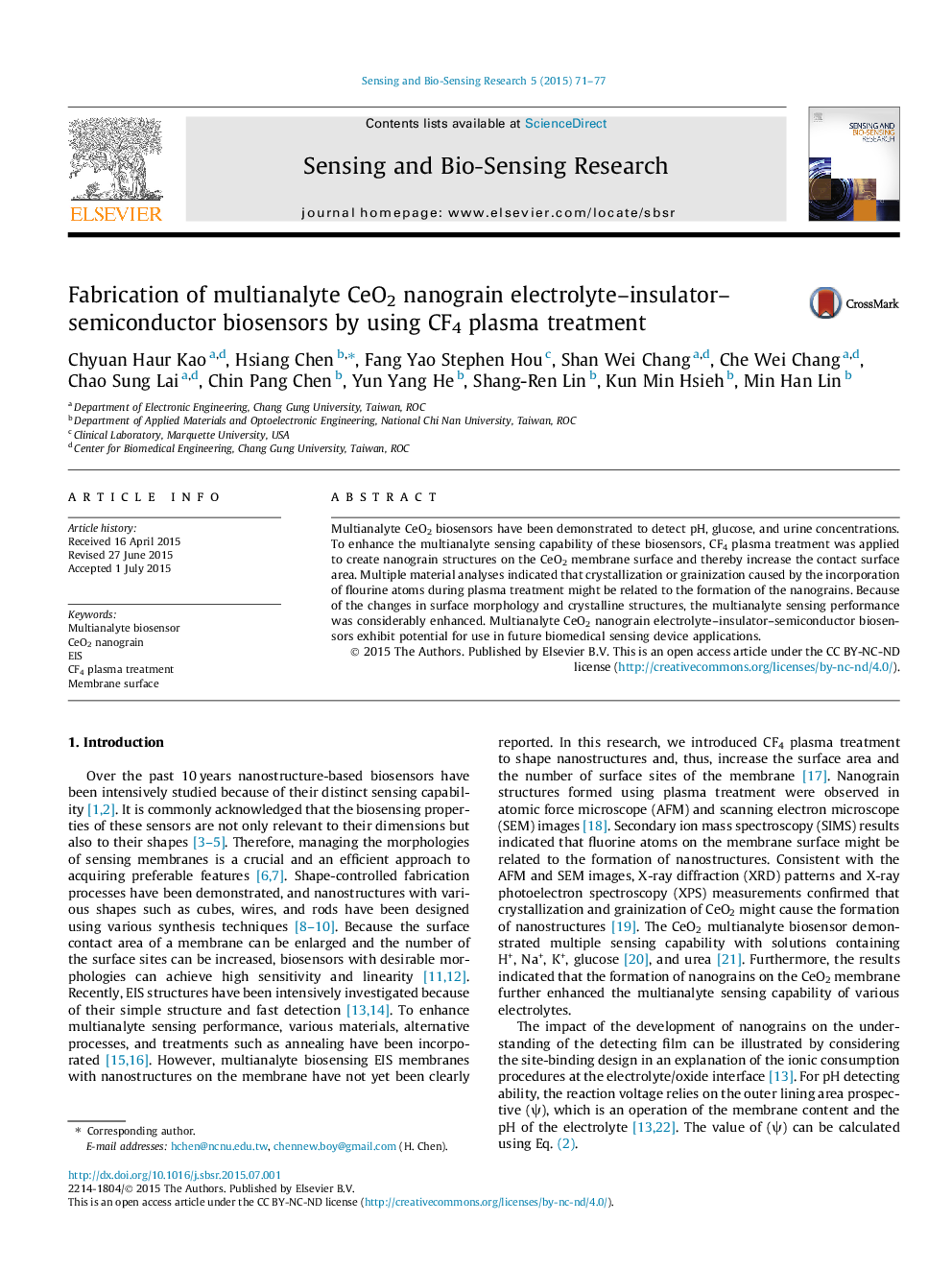| Article ID | Journal | Published Year | Pages | File Type |
|---|---|---|---|---|
| 804066 | Sensing and Bio-Sensing Research | 2015 | 7 Pages |
•CeO2 nanograin EIS biosensors have been fabricated.•Nanograins on membrane could be formed CF4 plasma.•Fluorine atoms might cause formation of nanograins.•Multianalyte sensing behaviors could be enhanced.
Multianalyte CeO2 biosensors have been demonstrated to detect pH, glucose, and urine concentrations. To enhance the multianalyte sensing capability of these biosensors, CF4 plasma treatment was applied to create nanograin structures on the CeO2 membrane surface and thereby increase the contact surface area. Multiple material analyses indicated that crystallization or grainization caused by the incorporation of flourine atoms during plasma treatment might be related to the formation of the nanograins. Because of the changes in surface morphology and crystalline structures, the multianalyte sensing performance was considerably enhanced. Multianalyte CeO2 nanograin electrolyte–insulator–semiconductor biosensors exhibit potential for use in future biomedical sensing device applications.
